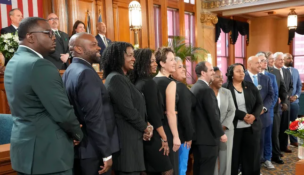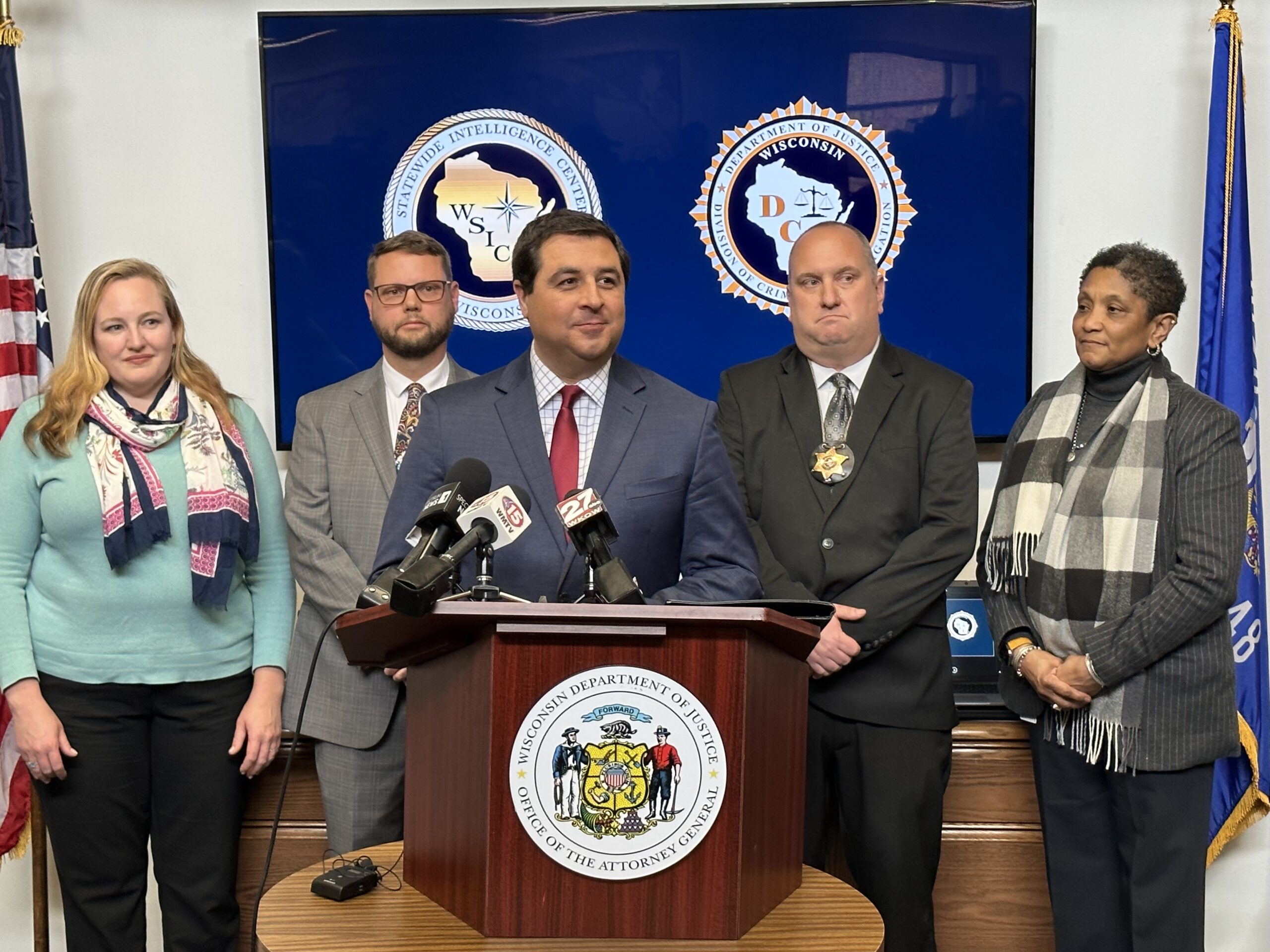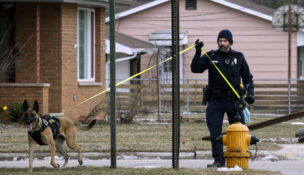Prior suit bars subsequent action
By: dmc-admin//August 9, 2006//
 The doctrine of claim preclusion bars subsequent litigation, even though the plaintiffs’ legal theories in the second action differ from those in the first, the Seventh Circuit held on Aug. 2.
The doctrine of claim preclusion bars subsequent litigation, even though the plaintiffs’ legal theories in the second action differ from those in the first, the Seventh Circuit held on Aug. 2.
The County J/Highway 164 Project involves the expansion of an 18-mile segment of Wisconsin State Highway 164 from two to four lanes. Construction by the Wisconsin Department of Transportation has commenced on this project.
A second project, known as the Ackerville Bridge Project, involves construction of two overpass structures on Highway 164 in Washington County, at the northern end of the expansion project.
After a public hearing in 2000, the Federal Highway Administration (FHWA) concluded that the construction would not significantly affect the environment. Construction commenced in May 2002.
In July 2003, Highway J Citizens Group (Citizens), filed suit against the DOT and FHWA, alleging that approval of both projects violated the Administrative Procedure Act (APA), the National Environmental Policy Act of 1969 (NEPA), and the Wisconsin Environmen-tal Policy Act (WEPA). The suit alleged the two projects were improperly segmented so that environmental damage from the Ackerville Project would not be considered when assessing the County J/Highway 164 Project.
The district court ruled against the Citizens, and the Seventh Circuit affirmed. Highway J Citizens Group v. Mineta, 349 F.3d 938 (7th Cir. 2003)(Citizens I). The Seventh Circuit held that the defendants sufficiently considered the environmental impact, and concluded there was no improper segmentation of the two projects.
In February 2005, Citizens, together with Waukesha County Environmental Action League (WEAL), filed suit in federal court again, arguing that the approval of the Highway 164 Project and the Army Corps’ issuance of a Clean Water Act permit violates the APA, the Clean Water Act (CWA), the NEPA, and the Federal-Aid Highway Act (FAHA).
|
What the court held Case: Highway J. Citizens Group v. DOT, No. 05-2667. Issue: Does the doctrine of claim preclusion allow a challenge to a federal highway project based on new theories, when a subsequent suit was dismissed? Holding: No. A plaintiff cannot avoid a prior final judgment by alleging new theories of law. |
United States District Court Judge Lynn Adelman denied the plaintiff’s request for an injunction enjoining further construction, holding that they could not show reasonable likelihood of success on the merits, because their challenges were barred by the doctrine of claim preclusion.
Although the previous challenge focused on the Ackerville Bridge Project, the court found that the suit also challenged the widening of Highway 164. Judge Adelman wrote, “A claim that one project was improperly segmented from another is necessarily a claim that the environmental review conducted for each project was inadequate because each review failed to consider the environmental effects of the other project.”
Because each suit arose from the same transaction and involve nearly the same factual allegations, the court held that claim preclusion applied, notwithstanding the difference in legal theories.
The plaintiffs appealed, but the Seventh Circuit affirmed in a decision by Judge Kenneth F. Ripple.
The three elements of claim preclusion are: an identity of the parties or their privies; an identity of the causes of actions; and a final judgment on the merits. If the requirements are met, suit is barred not just on the issues actually decided, but all issues that could have been raised. Brzostowski v. Laidlaw Waste Sys., Inc., 49 F.3d 337, 338 (7th Cir. 1995).
| |
||
|
Related Links Related Article |
||
| |
||
The plaintiffs did not contest that the first suit resulted in a final judgment, or that the parties were in privity. However, they challenged whether the cause of action is identical. The plaintiffs contended that the Highway 164 Project and the Ackerville Bridge Project are factually distinct.
The court agreed the projects were distinct, but nevertheless found that claim preclusion applies, because the first lawsuit did challenge the validity of both projects.
The court noted that the relief sought in the two cases — an EIS for the entire project, and an injunction against widening the highway — are identical.
The court wrote, “although the legal elements of each claim may be different, the underlying factual transaction is identical: the preparation and finalization of the Highway 164 EIS. As in Brzostowski, the resolution of both of the plaintiffs’ complaints are grounded in the adequacy of the environmental analysis for the Highway 164 Project.”
Accordingly, the court affirmed.
Click here for Case Analysis.
David Ziemer can be reached by email.
Legal News
- Milwaukee’s Common Council now has the most African Americans, women and openly LGBTQ members ever
- Office of School Safety Provides Behavioral and Threat Assessment Management Training Ahead of 25th Anniversary of Columbine Shooting
- Wisconsin Supreme Court to hear arguments in Democratic governor’s suit against GOP-led Legislature
- Lawsuit asks Wisconsin Supreme Court to strike down governor’s 400-year veto
- Wisconsin man pleads not guilty to neglect in disappearance of boy
- ACS Selects University of Wisconsin Law School’s Miriam Seifter for 2024 Ruth Bader Ginsburg Scholar Award
- People with disabilities sue in Wisconsin over lack of electronic absentee ballots
- Wisconsin Republicans ignore governor’s call to spend $125M to combat ‘forever chemicals’
- Native American voices are finally factoring into energy projects
- Steven Avery prosecutor Ken Kratz admits ‘mistakes were made’
- Colombian national extradited to Milwaukee faces International narcotics-trafficking conspiracy charge
- MPD: Milwaukee homicides down nearly 40 percent compared to last year
WLJ People
- Power 30 Personal Injury Attorneys – Russell Nicolet
- Power 30 Personal Injury Attorneys – Benjamin Nicolet
- Power 30 Personal Injury Attorneys – Dustin T. Woehl
- Power 30 Personal Injury Attorneys – Katherine Metzger
- Power 30 Personal Injury Attorneys – Joseph Ryan
- Power 30 Personal Injury Attorneys – James M. Ryan
- Power 30 Personal Injury Attorneys – Dana Wachs
- Power 30 Personal Injury Attorneys – Mark L. Thomsen
- Power 30 Personal Injury Attorneys – Matthew Lein
- Power 30 Personal Injury Attorneys – Jeffrey A. Pitman
- Power 30 Personal Injury Attorneys – William Pemberton
- Power 30 Personal Injury Attorneys – Howard S. Sicula











